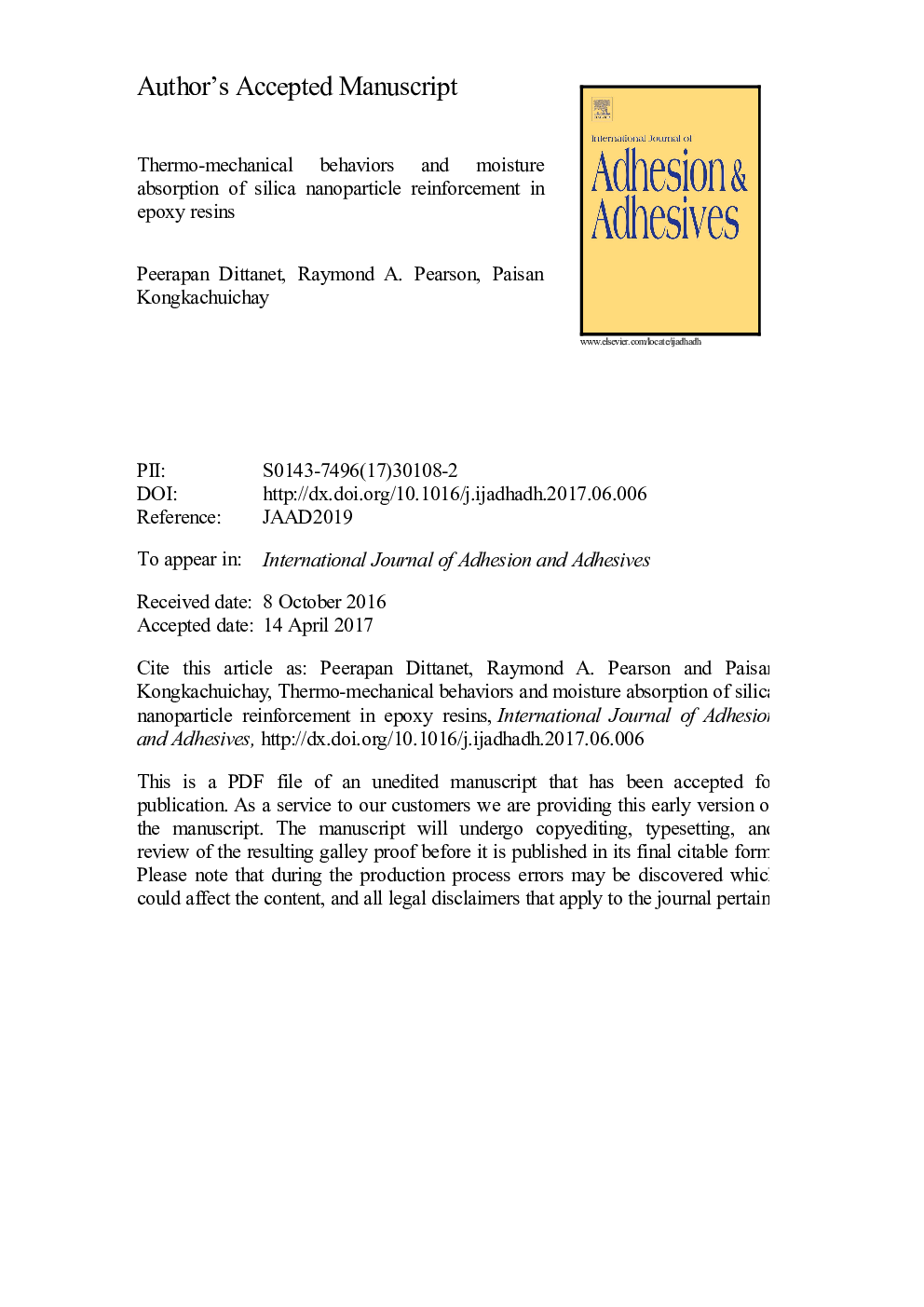| کد مقاله | کد نشریه | سال انتشار | مقاله انگلیسی | نسخه تمام متن |
|---|---|---|---|---|
| 5014767 | 1463459 | 2017 | 29 صفحه PDF | دانلود رایگان |
عنوان انگلیسی مقاله ISI
Thermo-mechanical behaviors and moisture absorption of silica nanoparticle reinforcement in epoxy resins
ترجمه فارسی عنوان
رفتارهای حرارتی مکانیکی و جذب رطوبت تقویت کننده نانوذرات سیلیکا در رزین های اپوکسی
دانلود مقاله + سفارش ترجمه
دانلود مقاله ISI انگلیسی
رایگان برای ایرانیان
کلمات کلیدی
نانوذرات سیلیکا، نانوکامپوزیت اپوکسی، مواد پیشرفته، رزین های اپوکسی،
موضوعات مرتبط
مهندسی و علوم پایه
سایر رشته های مهندسی
مهندسی مکانیک
چکیده انگلیسی
An investigation of the thermo-mechanical behavior of silica nanoparticle reinforcement in two epoxy systems consisting of diglycidyl ether of bisphenol F (DGEBF) and cycloaliphatic epoxy resins was conducted. Silica nanoparticles with an average particle size of 20 nm were used. The mechanical and thermal properties, including coefficient of thermal expansion (CTE), modulus (E), thermal stability, fracture toughness (KIC), and moisture absorption, were measured and compared against theoretical models. It was revealed that the thermal properties of the epoxy resins improved with silica nanoparticles, indicative of a lower CTE due to the much lower CTE of the fillers, and furthermore, DGEBF achieved even lower CTE than the cycloaliphatic system at the same wt.% filler content. Equally as important, the moduli of the epoxy systems were increased by the addition of the fillers due to the large surface contact created by the silica nanoparticles and the much higher modulus of the filler than the bulk polymer. In general, the measured values of CTE and modulus were in good agreement with the theoretical model predictions. With the Kerner and Halpin-Tsai models, however, a slight deviation was observed at high wt.% of fillers. The addition of silica nanoparticles resulted in an undesirable reduction of glass transition temperature (Tg) of approximately 20 °C for the DGEBF system, however, the Tg was found to increase and improve for the cycloaliphatic system with silica nanoparticles by approximately 16 °C. Furthermore, the thermal stability improved with addition of silica nanoparticles where the decomposition temperature (Td) increased by 10 °C for the DGEBF system and the char yield significantly improved at 600 °C. The moisture absorption was also reduced for both DGEBF and cycloaliphatic epoxies with filler content. Lastly, the highest fracture toughness was achieved with approximately 20 wt.% and 15 wt.% of silica nanoparticles in DGEBF and cycloaliphatic epoxy resins, respectively.
ناشر
Database: Elsevier - ScienceDirect (ساینس دایرکت)
Journal: International Journal of Adhesion and Adhesives - Volume 78, October 2017, Pages 74-82
Journal: International Journal of Adhesion and Adhesives - Volume 78, October 2017, Pages 74-82
نویسندگان
Peerapan Dittanet, Raymond A. Pearson, Paisan Kongkachuichay,
